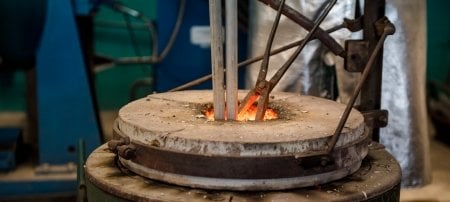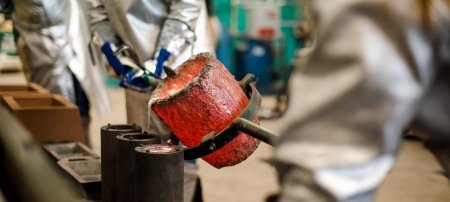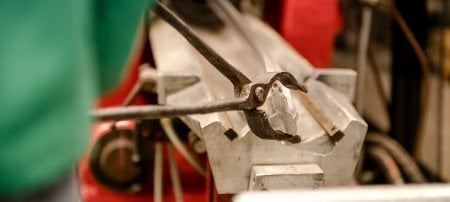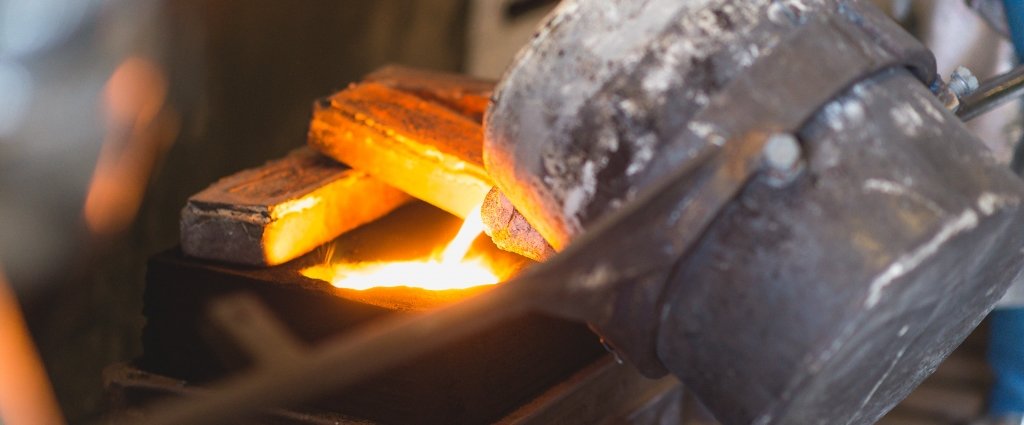Not many campuses have a foundry. Students use our foundry, but it’s more than a classroom. Researchers run tests in the foundry, but it’s more than a lab. Companies commission foundry work, but it’s more than an R&D facility. At Michigan Tech, our foundry is the centerpiece of an innovative metal design process.
Foundries aren’t old school.
The cutting edge of metal design didn’t get left in the Bronze Age; nowadays, the craft has progressed past a simple molten pour and requires analytical research before and after. Researchers customize alloys, optimizing them for specific uses. Foundry workers harness high heat and intense pressure in casting and extrusion to create just the right internal structure. Once the metal gets shaped and stretched, it undergoes testing that spans atomic structures to the tensile strength of entire rods.
Most campuses and industries have bits and pieces of a metal design process. Not us. Our team of faculty, staff, and students are present from first calculation to final report—transferring the billet each step of the way. With Kevlar gloves, of course.
1. The furnace is hot—more than 700 degree Celsius (about 1,300 degree Fahrenheit). Inside, several aluminum alloy ingots melt into orange, mercurial pools.

2. Sparks fly when cold or foreign material hits the liquid melt inside or the hot edge of the crucible. Compared to steel or brass, aluminum has a lower melting point (660 degree Celsius) and produces many of the lightweight alloys in use today.

3. Casting is the art and science of pouring molten metal. The metal is not just hot, but blinding. Undergraduates Erika Harris and Julia Scruton wear face shields along with reflective and fire-resistant jackets, boot spats, and thick mitts worthy of foundry work and Keweenaw winters.

4. As the aluminum billets cool, they contract and dimple downward. Set in an oven around 400 degree Fahrenheit, the heat homogenizes the microstructure before extrusion.

5. Tom Wood, a staff engineer in the foundry, holds several extrusion dies. As the hot billet pushes through the die, the metal elongates, changing both its shape and structure.

6. Aluminum is one of the most commonly extruded metals. Foundry staff designed and tested a special Upper Peninsula extrusion: The extra hook serves as a bottle opener once sliced into keychain-sized slabs.

Michigan Technological University is an R1 public research university founded in 1885 in Houghton, and is home to nearly 7,500 students from more than 60 countries around the world. Consistently ranked among the best universities in the country for return on investment, Michigan's flagship technological university offers more than 120 undergraduate and graduate degree programs in science and technology, engineering, computing, forestry, business, health professions, humanities, mathematics, social sciences, and the arts. The rural campus is situated just miles from Lake Superior in Michigan's Upper Peninsula, offering year-round opportunities for outdoor adventure.




